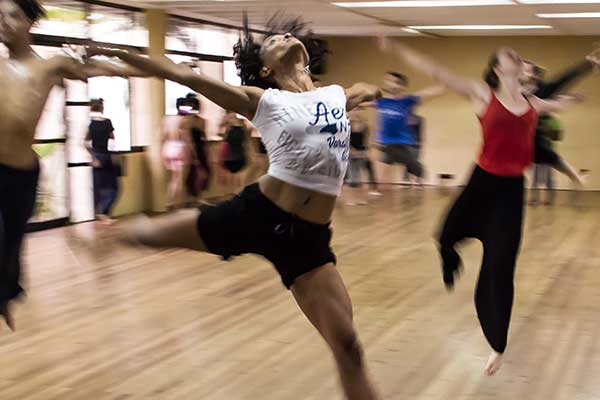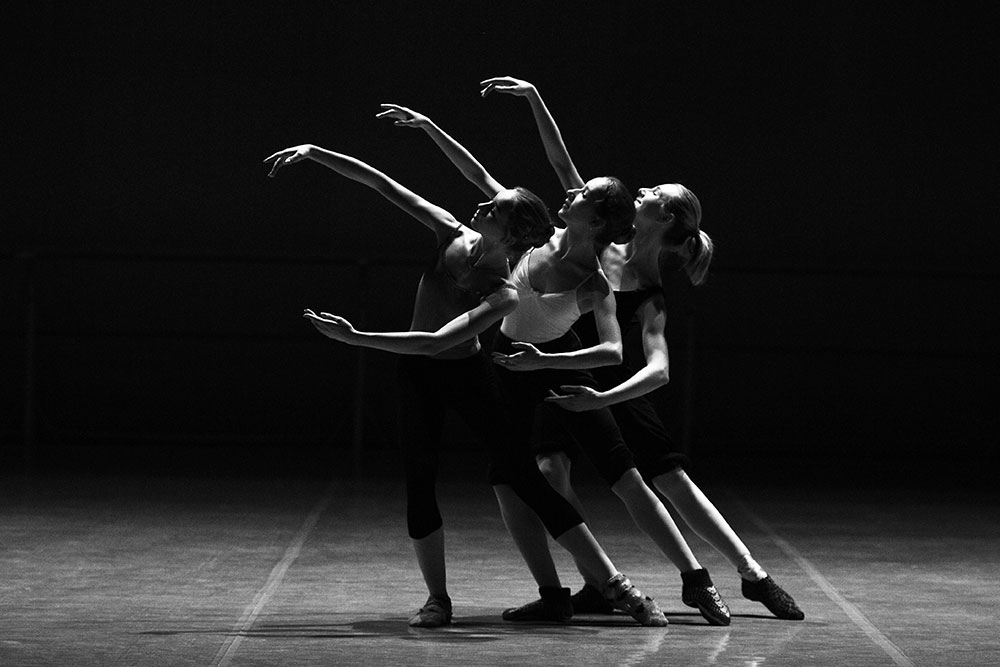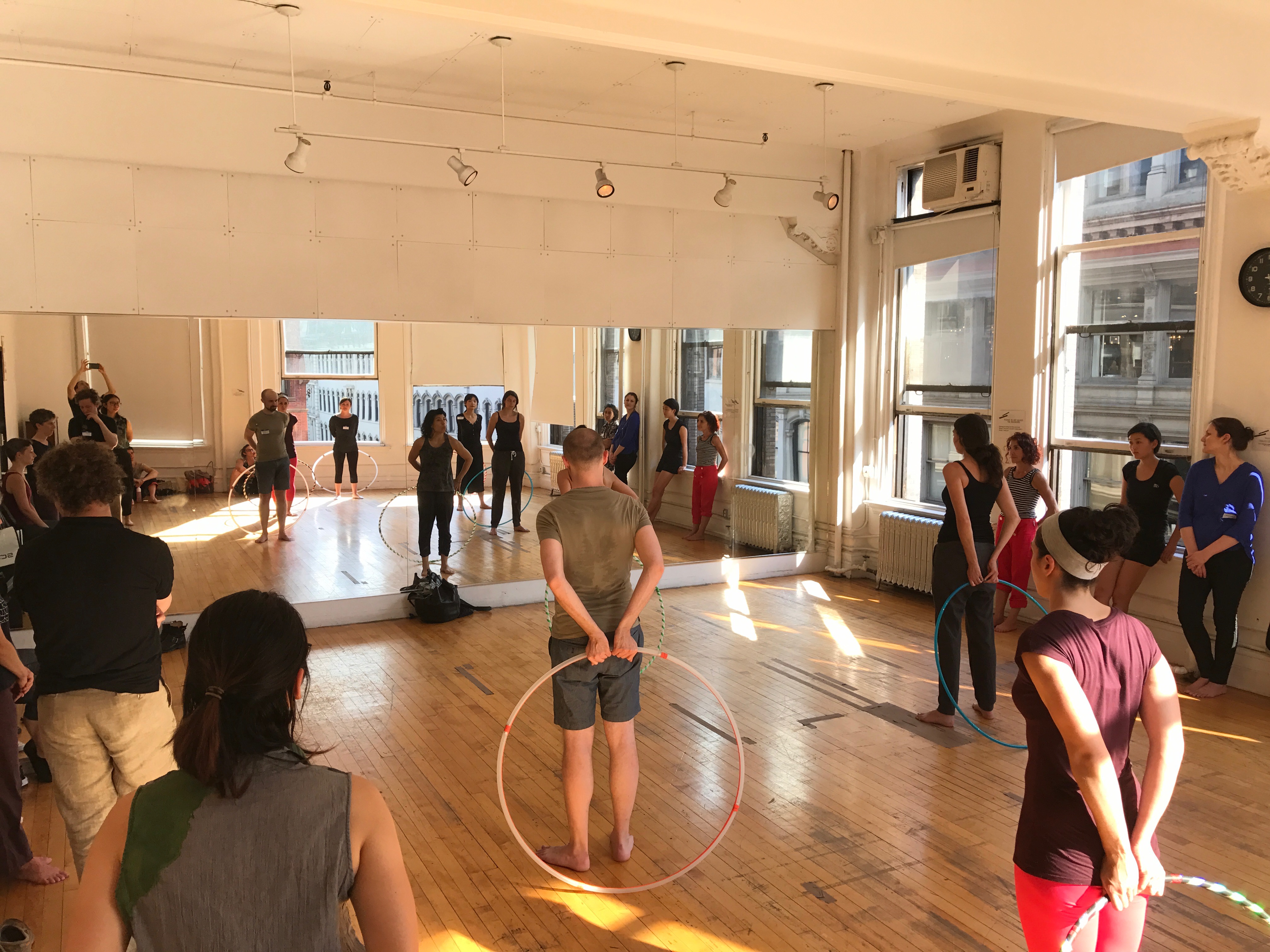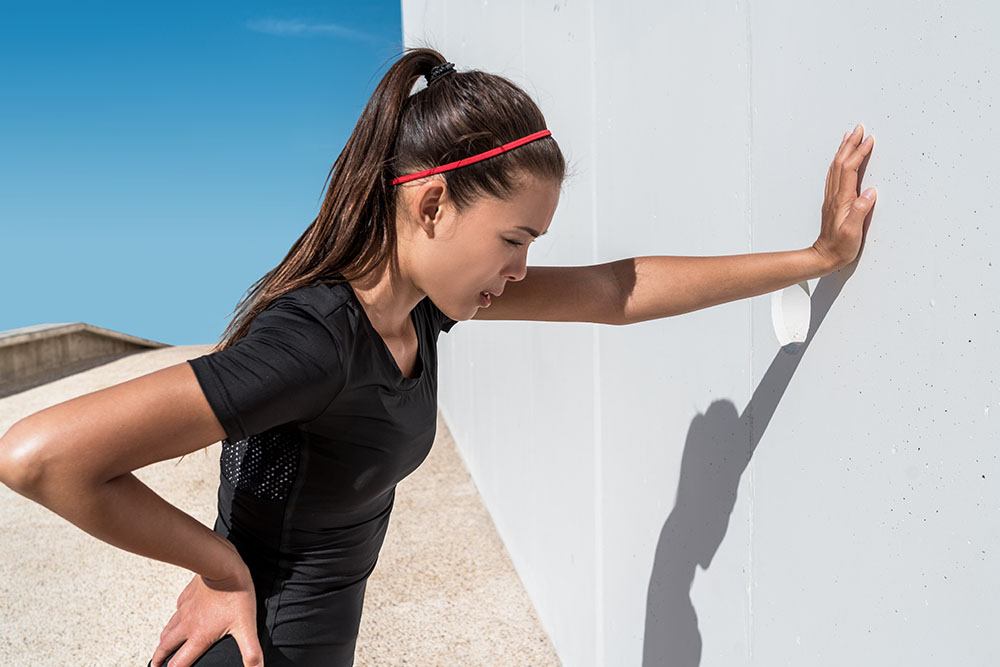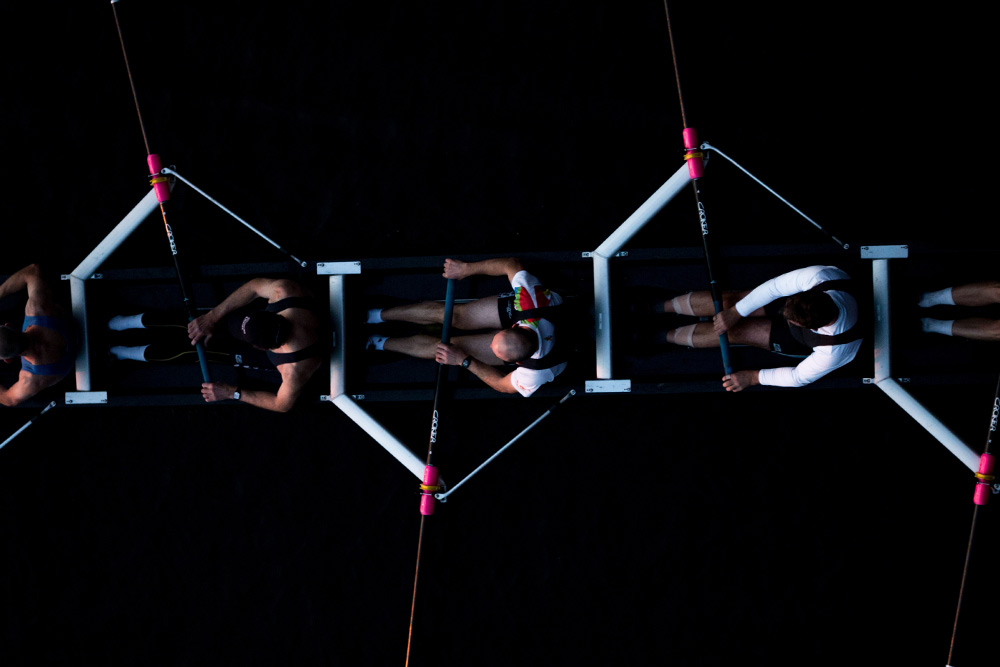Do Younger & Older Brains Respond Differently To Dance?

Aga Burzynska, PhD
Dance – as a ritual, therapy, and leisure activity – has been known for thousands of years. Today, dance is increasingly used as therapy for cognitive and neurological disorders such as dementia, multiple sclerosis, or Parkinson’s disease. Yet, the effects of dance training on the brain, such as in young professional dancers, are poorly understood. In the last 5–10 years, several MRI studies have been published comparing brains of professional dancers to non-dancers. However, there was no clear take-home message from these studies, which included very small samples (typically 10-15 dancers). Some focused only on brain structure, some on function, some included ballet dancers, others modern dancers, and the studies used very varied measures of estimation of dance proficiency and skill. Also, very few included cognitive measures of any kind. We believe that understanding the effect of intense training on the heathy brain would be an important first step to predicting outcomes in clinical populations
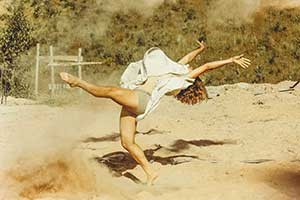 In this article, I will describe two of our studies published in 2017, in which we studied the effects of dance and the brain and cognition. In the first study, we took a multimodal Magnetic Resonance Imaging (MRI) approach to compare brains of young dancers to their peers who never trained dancing. In the second clinical study, described only briefly we studied the effects of 6-month dance intervention on white matter integrity in cognitively healthy older adults.
In this article, I will describe two of our studies published in 2017, in which we studied the effects of dance and the brain and cognition. In the first study, we took a multimodal Magnetic Resonance Imaging (MRI) approach to compare brains of young dancers to their peers who never trained dancing. In the second clinical study, described only briefly we studied the effects of 6-month dance intervention on white matter integrity in cognitively healthy older adults.
Related Article: A Conversation Between Dance And Neuroscience
Study 1: Young Dancers
Our study design was aimed to address several of the inconsistencies of the previous studies. First of all, we used four different neuroimaging techniques: two that measured brain structure and two that measured brain function. Second, we tested dancers and non-dancers on a broad cognitive battery, which included measures of working memory, episodic memory, processing speed, fluid intelligence and executive function. We specifically included cognitive abilities that can be trained with dancing while learning a choreography: spatial memory and sequential memory. Third, we carefully chose our participants. They were all female to avoid gender differences in brain size. They were all trained in versatile modern dance and had normal body weight with no history of anorexia. Finally, we did not only ask the participants on how long and how much they trained, but we tested their dance skill in the lab with a video game (Dance Central), which measures move accuracy. We also tested their balance in a challenging task of standing on one leg with closed eyes on a soft pad.
Results:
After comparing 20 young (18–32 years old) expert female modern dancers with 20 age- and education-matched non-dancers, we got the following results: We found that dancers outperformed non-dancers on Dance Central video game and a balance task, but not on laboratory cognitive tests. This means that, in young healthy adults, dance training results in proficiency in dance skills, but does we found no evidence for transfer to other cognitive abilities.
Next, we used diffusion MRI to infer about microstructure of white matter fibers. This means, by measuring natural diffusion of water molecules in the tissue, we could learn about the structure of fibers in the brain that interconnect different brain regions. We focused on the corticospinal tract: the fibers that connect regions of the cortex responsible for motor and sensory function to the spine and rest of the body. We found some differences between dancers and non-dancers that most likely reflect thicker fibers in dancers than in non-dancers. Most importantly, thicker fibers transmit signals faster.
As the second structural measure, we used structural MRI scans to compare cortical thickness and subcortical brain volumes. We found no significant differences between dancers and non-dancers. This means, we did not find thicker cortex, as sometimes observed in short-term motor training studies, or decreased brain volume, as reported previously in ballet dancers. Therefore, we concluded that cortical thinning cannot be a general feature related to dance training. It may be linked to low body mass in ballet dancers or to very rigorous ballet training, but does not seem to be true for versatile modern dancers with normal weight.
Then, we measured changes in brain activity when participants watched video clips of dancers. They were instructed to try to imagine doing the moves they observed. In this way, we made use of the brain’s “mirror system” or “action observation system”: the brain regions that become active when we observe an action, similar to if we were doing it. We found that dancers were able to activate action observation network to a greater degree. However, we do not know whether this is because functional changes in the brain, or just better strategies that allows them to engage their brain better to observe and remember a choreography.
Finally, we investigated spontaneous co-activations in the brain, so called functional connectivity. We found some differences in functional connectivity between dancers and non-dancers, related to motor learning regions. These differences were related to the dance skill. Namely, if dancers had greater functional connectivity, this connectivity was positively related to performance on video game, and vice versa.
Related Article: Dancing Can Reverse Aging In The Brain
Study 2: Older Adults
One could expect similar effects of dance training in older adults. However, this is not what we found. We recruited 174 older adults and randomized them into 4 intervention groups: aerobic walking, walking with nutrition supplement, dancing, and a control group: stretching and toning. Thus far, we have looked only at their white matter, measured with diffusion MRI. We found that matter integrity declined in most of white matter tracts over just 6 months, regardless of the intervention group. Only in one brain structure, the fornix, we observed improvement in the dancing group. The fornix is a bundle of fibers which connects to hippocampus and is involved in processing speed and memory. It is also known to decline faster in people who show symptoms of dementia.
Key Takeaways:
- Proficiency in dance abilities did not transfer to better cognitive performance: young dancers and young non-dancers performed similarly on tests of cognitive ability.
- Young dancers and non-dancers showed differences in the microstructure of the corticospinal tracts (critical for motor control and execution). These differences likely indicate thicker fibers in dancers. Most importantly, thicker fibers can transmit signals faster.
- Young dancers demonstrated greater functional connectivity of certain brain regions responsible for motor learning compared to young non-dancers.
- Professional training in adolescence and young adulthood is linked to differences in corticospinal tract (responsible for motor functions), whereas 6-month, 3x/week training in older adults resulted in positive change in the fornix (involved in cognitive functions).
How does this relate to HIIT?
Dance is an intermittent activity that involves short bursts and active and passive recovery. Research has shown that for a wide range of dance styles, classes have significantly lower intensity than performances. As such, it is suggested that dancers engage in supplementary forms of aerobic exercise in order to properly condition for performances. Given the intermittent style of dance, high intensity interval training (HIIT) is recommended. Rogrigues-Krause, Krause and Reischak-Olverira (2015) suggest “…dancers would benefit from HIIT, including short duration and high intensity exercise dance sessions, mainly by breaking the plateaus they maintain during their daily training routines of classes and rehearsals” (p.98).
For all types of dancers, if you are interested in combining benefits of high intensity interval training (HIIT) with the benefits of dance, intensity dance training may be the way to go. However, there is no research evidence to back up the idea that HIIT dance can have greater positive effects on the aging brain that HIIT or dance alone.
Looking Forward:
Our ongoing analyses will show the effects of dance on brain volume and functional connectivity in older adults. It may be that older adults show more gain than young dancers, as their brains are aged and there may be more room for improvement. On the other hand, there may be limited plasticity in the older brain, resulting in no structural or functional gains. It is also possible, as in case of white matter tract integrity, that the effects in older adults will be in very different brain regions. Together, our results show the importance of identifying the effects of dance in different populations and clinical samples. Follow the BRAiN lab for more updates.
Related Article: Dance Harmony In Woodstock
You Might Like:
Do Younger & Older Brains Respond Differently To Dance?
Aga Burzynska, PhD Dance – as a ritual, therapy, and leisure activity – has been known for thousands of years. Today, dance is increasingly used as therapy for cognitive and neurological disorders such as dementia, multiple sclerosis,...Dancing Can Reverse Aging In The Brain
Julia C. Basso, PhD A healthy and functional brain requires healthy, intact cells that fire effectively. Action Potentials Neurons generate action potentials, which are the brain’s primary source of currency. Action potentials are electrical signals...Dancing Helps Heal Individuals With Parkinson’s Disease
Julia C. Basso, PhD Parkinson’s disease (PD) is a neurodegenerative disorder that is characterized by problems of movement. Though the disease normally manifests after the age of 60, in rare circumstances, the disease may develop...A Conversation Between Dance And Neuroscience
Julia C. Basso, PhD Dance and neuroscience may seem like two distinct fields, but Jody Oberfelder, director, choreographer, and filmmaker, knows that they intersect in intricate ways. Her recent work, The Brain Piece, just had...References:
Burzynska Agnieszka Z., Finc Karolina, Taylor Brittany K., Knecht Anya M., Kramer Arthur F. (2017). Dancing Brain: Structural and Functional Signatures of Expert Dance Training. Frontiers in Human Neuroscience, 11, 1-20.
Burzynska Agnieszka Z., Jiao Yuqin, Knecht Anya M., Fanning Jason, Awick Elizabeth A., Chen Tammy, Gothe Neha, Voss Michelle W., McAuley Edward, Kramer Arthur F. (2017). White Matter Integrity Declined Over 6-Months, but Dance Intervention Improved Integrity of the Fornix of Older Adults. Frontiers in Aging Neuroscience, 9, 1-15.
Rodrigues-Krause, J., Krause, M., and Reischak-Olverira, A. (2015). Cardiorespiratory Considerations in Dance: From Classes to Performances. Journal of Dance Medicine & Science, 19, 91-102.

